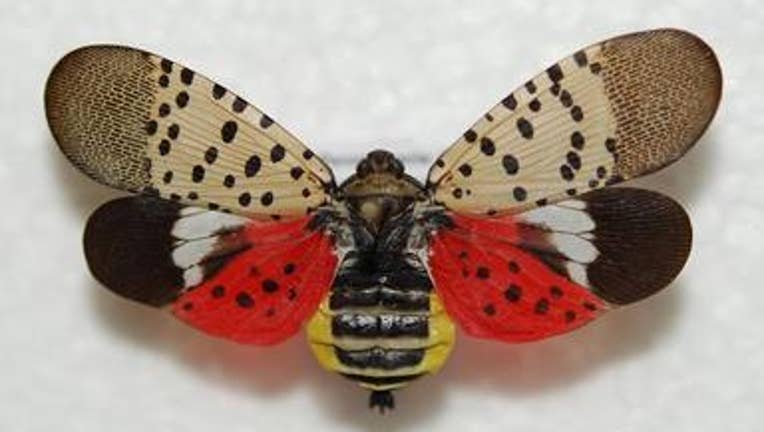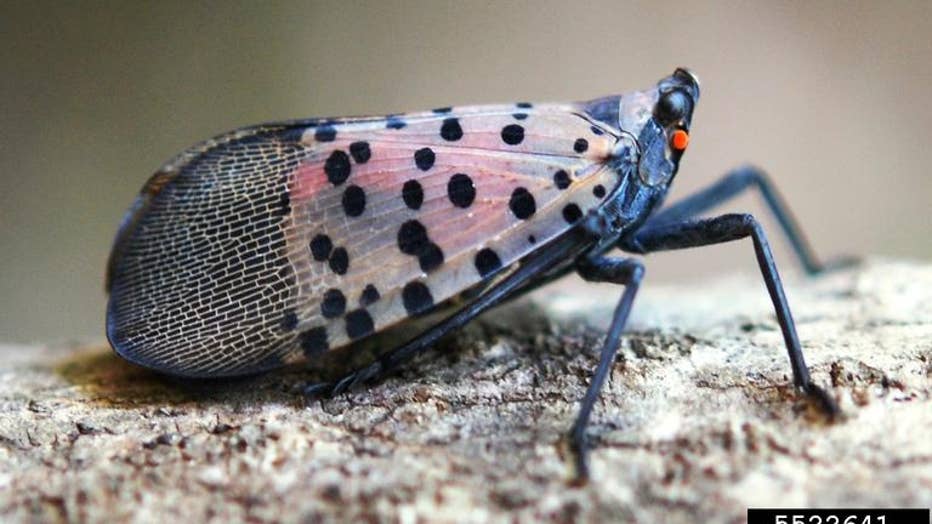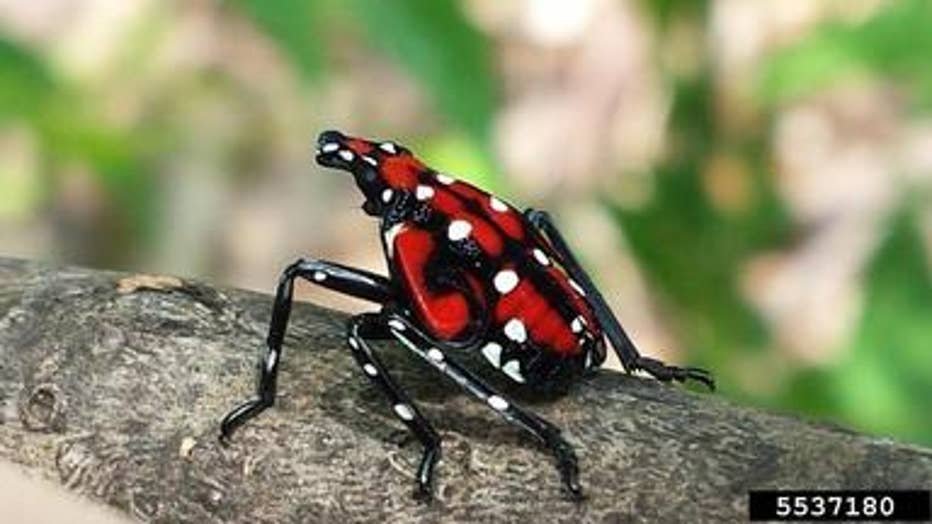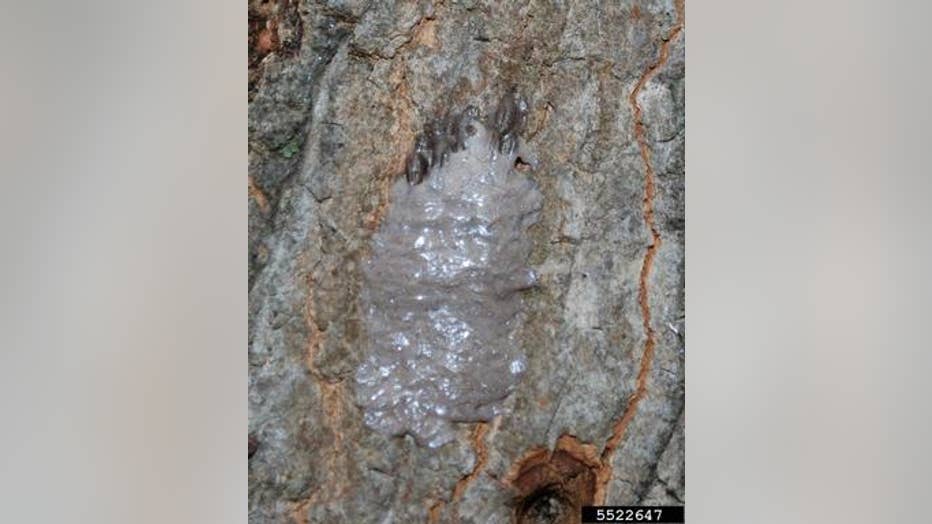Keep an eye out for the invasive spotted lanternfly in Michigan

DETROIT (FOX 2) - Michigan residents are asked to keep an eye out for the spotted lanternfly because the invasive insect could wreak havoc on the state's agriculture.
It could damage or kill more than 70 varieties of crops and plants including grapes, apples, hops, and hardwood trees.
They suck sap from host plants and secreting large amounts of a sugar-rich, sticky liquid called honeydew. This honeydew and the resulting black sooty mold can kill plants and foul surfaces. The honeydew often attracts other pests like yellow jackets, flies, and ants
The insect was first detected in the United States in 2014, and infestations have been confirmed in Connecticut, Delaware, Indiana, Maryland, New Jersey, New York, Ohio, Virginia, and West Virginia.

Spotted lanternflies have not been located in Michigan. However, in November 2020, the Department of Agriculture and Rural Development found dead adult lanternflies in packing material at two separate locations in the state.
Adults are roughly one inch long. Their folded wings are gray to brown with black spots. Open wings reveal a yellow and black abdomen and bright red hind wings with black spots transitioning to black and white bands at the edge.

A spotted lanternfly nymph
If you receive shipments from states that have the insect, you should look for adults or egg masses.
"Spotted lanternfly may be a colorful insect worthy of an Instagram post, but also is an invasive species with the potential to wreak havoc on trees, plants, and other natural resources, resulting in millions of dollars in damages," said Robert Miller, invasive species prevention and response specialist for MDARD. "In addition, it has the potential to impact grapes, stone fruits, apples and other crops in Michigan's fruit belt as well as important timber species statewide."
From late summer to the first hard frost, the insects are in their adult phase. Their eggs, which are in masses with a gray, waxy, putty-like coating that resembles old chewing gum, can survive the cold and hatch in spring.

A spotted lanternfly egg mass
"Spotted lanternflies cannot fly long distances, but they lay eggs on nearly any surface, including cars, trailers, firewood and outdoor furniture," said Miller. "Before leaving an area where this pest is present, check vehicles, firewood, and outdoor equipment for unwanted hitchhikers."
If you find a spotted lanternfly egg mass, nymph or adult, take one or more photos, make note of the date, time, and location of the sighting, and report to the Michigan Department of Agriculture and Rural Development, MDA-Info@Michigan.gov or phone the MDARD Customer Service Center, 800-292-3939. If possible, collect a specimen in a container for verification.

